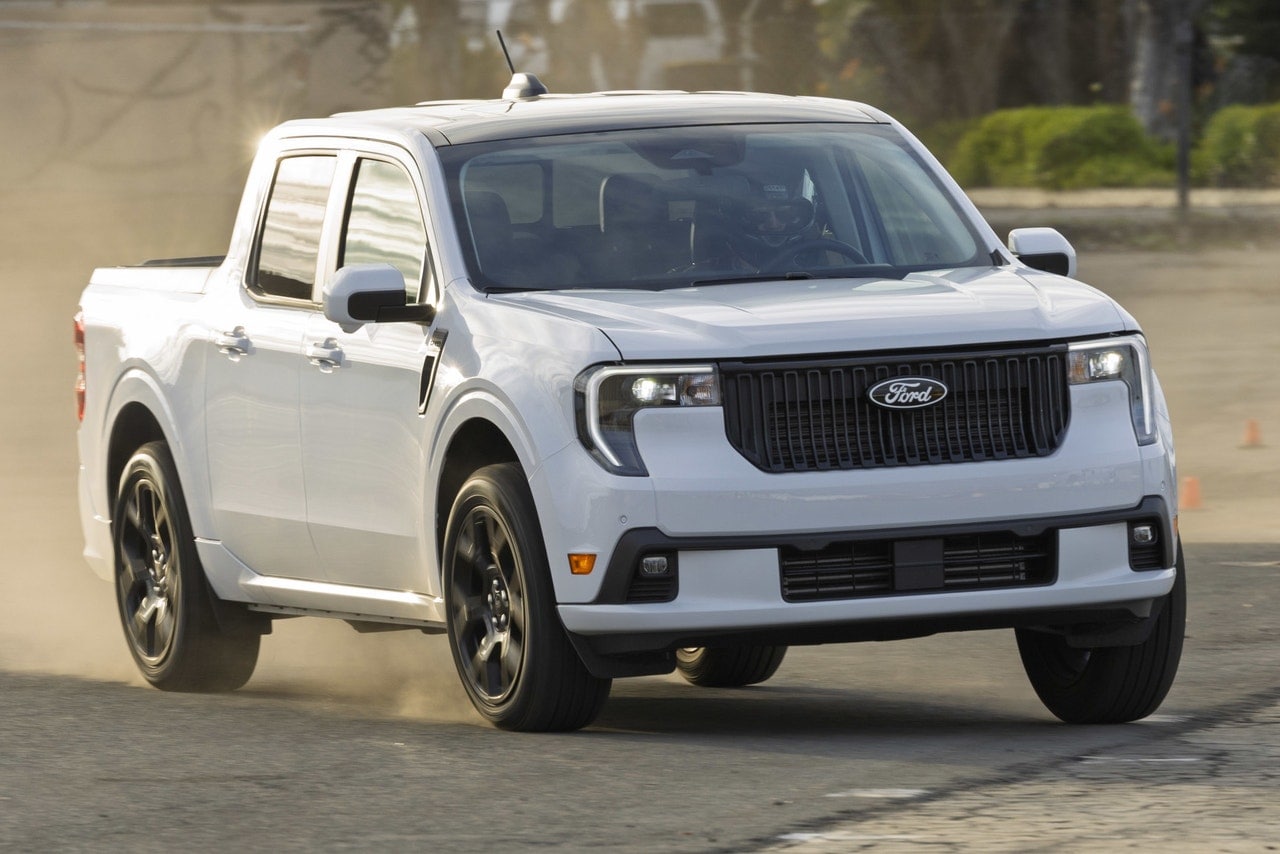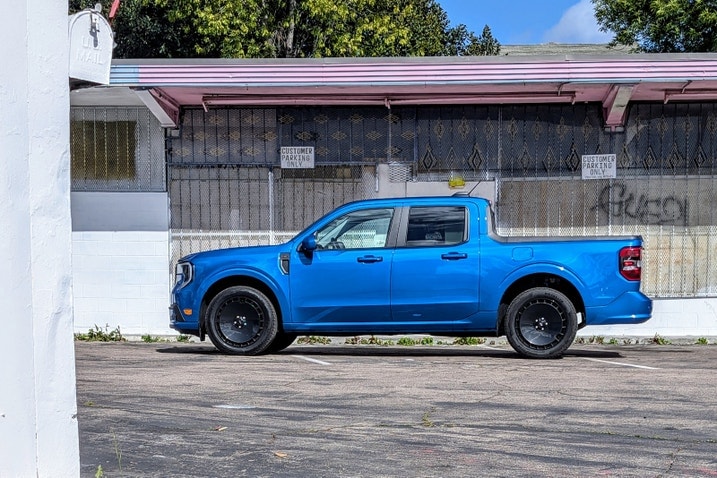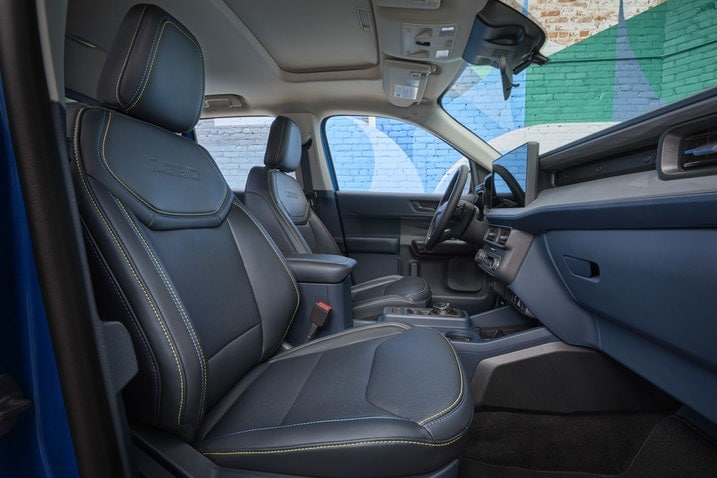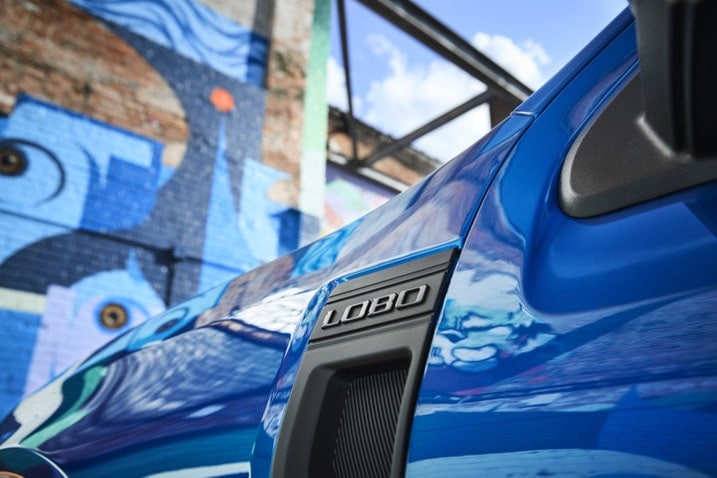- Sport-tuned suspension and torque vectoring give the Lobo athletic handling for a small truck.
- Its styling is reminiscent of the '80s and '90s sport truck scene.
- 250-horsepower turbocharged four-cylinder engine and all-wheel drive are standard.
2025 Ford Maverick Lobo First Drive: Resurrecting the Compact Sport Truck
Fun is found where you least expect it, like in a Maverick
Compact pickup trucks used to be everywhere in Southern California. As such, it was only natural that a culture of modifying these workaday runabouts flourished. The mini-truck scene ranged from fully customized lowriders with ridiculous hydraulics and wild paint jobs to corner-carving sleepers in the local canyons. Heck, there was even a series filled with these trucks in the Sports Car Club of America.
Nostalgia for these little guys led to some design sketches being batted around at Ford before inspiring Tucci Hot Rods to build a one-off Maverick for the SEMA show in 2022. The enthusiasm for this truck greenlit what would become the Maverick Lobo, which is all-new for 2025. Sporting some new bodywork, eye-catching wheels and a colorful interior drawing influence from sneaker design, the Lobo is Ford's attempt to capture some of the fun and style from that mini-truckin' time gone by.
What makes a Lobo
To make the Lobo a reality, Maverick engineers utilized Ford Motor Co.'s vast parts bin. Starting under the hood, the Lobo sticks with the Maverick's turbocharged 2.0-liter inline-four. That engine's 250 horsepower and 277 lb-ft of torque are unchanged, but the Lobo uses a seven-speed automatic transmission in place of the eight-speed auto that's behind the same engine in the standard Maverick. The Lobo's transmission is essentially the same unit but goes without the eight-speed's second gear, making the seven-speed more amenable to aggressive autocross driving. More on that in a few paragraphs.
The Lobo enjoys a slightly lower ride height, losing a half-inch up front and 1.1 inches at the rear. I think it could still stand to lose about 3 inches off its ride height, but the shorter springs help even out the stance of the Lobo. Coping with the lower ride height and stiffer springs are retuned shocks, specific to the Lobo. Ford's parts bin comes back into play with the steering and brake hardware. From the U.S. come the stiffer strut mounts from the Mustang Mach-E and the upgraded cooling components from the 4K Tow package on the standard Maverick. From Europe comes the Ford Kuga's (Europe's version of the Escape) quicker steering gear as well as the Focus ST's larger brake rotors and its dual-piston front brake calipers. Not only does this upgrade deliver more braking performance, but the Focus ST's brake pad size is common, lending itself toward good aftermarket support should you want to upgrade the pads for more aggressive driving.
The Lobo gets a unique set of 19-inch wheels, reminiscent of the turbofan-style wheels from the '70s and '80s, but Ford wraps those wheels in a really strange tire. With its aesthetic and its sport truck performance brief, you'd expect something wide and sticky. But the Lobo runs Goodyear Wrangler Territory H/T all-season tires that would look more at home on a Ranger. One last parts bin find is the twin-clutch rear-drive unit (Ford calls it the RDS) from the Maverick Tremor and the Bronco Sport. While it sits in the same place you'd find a traditional rear differential, the RDS and some nifty electronics allow for torque vectoring across the rear wheels to make the Lobo a more responsive handler and capable of holding little drifts out of tight corners. It really is the pièce de résistance in the Lobo.
About that autocross
Making the most of that trick RDS and its torque vectoring requires, according to Ford (and its legal team), a closed course. So Ford set up a handy little autocross course to illustrate the Lobo's true capabilities. After a lap or two, it's clear that the tires are not really cut out for this kind of work. Autocross tends to demand aggressive braking and steering inputs and these Wranglers simply lack the grip I thought I needed to drive the Lobo quickly. But that lack of grip also exists in the rear, and once I came to understand what the RDS wanted to see to provoke some tail-out fun, those tires became an asset instead of a liability.
Lobo mode, as it's called, unlocks the true capabilities of the RDS' torque-vectoring capabilities. Through an array of sensors measuring steering angle, various wheel speeds, throttle and brake applications, the RDS selects which rear wheel will get more power to help you achieve what the software thinks you want. Getting the Lobo to perform a mild powerslide out of a corner takes a bit of overdriving (you've really got to stomp on the gas to get things in motion), but I found that technique could produce a nice neutral to somewhat lurid corner exit on command. What the Lobo could truly benefit from are some real seats. The standard Maverick's chairs just don't have the bolstering and support you need to stay in front of the steering wheel during hard cornering and I found myself with some bruised knees (first-world problems) after hucking the Lobo around the autocross course.
The stability and traction control systems are heavily recalibrated to allow for this playfulness but it's the RDS that's doing the real work, so you can still slide around even if you fully disable all the systems. The one thing you can't disable is the Maverick's rollover protection. It's pretty conservative and only it proved to be the limiting factor in how long the Lobo would hold a slide. Well, that and not wanting to be that guy who knocks over a whole bunch of cones.
Lobo engineers fully expects owners who are interested in autocrossing, or just plain driving fast, to swap out the tires and brake pads for more aggressive equipment. These engineers acknowledge that a stock Lobo might simply be a starting point for customization and they're OK with that.
In the real world
Because the Lobo isn't significantly different from, say, the Lariat trim of the Maverick on which it's based, it still behaves very much like the standard truck. Driven back to back, I could feel the quicker steering in the Lobo as well as the differences between the transmissions, but driven in isolation, the Lobo feels more than capable of being driven every day without punishing the driver with a stiff ride and a noisy interior.
In fact, on the highway the Lobo enjoys the advantage of having retuned dampers as it's able to soak up high-speed dips and whoops so common on Southern California's freeways. Watching the way other vehicles around me would ride over the same bumps further solidified my opinion as to how well the Lobo's ride has been tuned. Just remember, the Lobo's sport-tuned suspension caps its tow limit at 2,000 pounds despite having the Maverick's 4K Tow package cooling upgrades.
And while I did say that I'd love to see the Lobo go even lower, its mild drop means that you don't need to worry about driveways, badly broken pavement, or even the odd piece of road debris when you're bombing around town. The transmission tuning in Sport and Lobo modes (yes, I used it on the street, so don't tell Ford) is aggressive at holding gears and popping off downshifts. The turbo-four makes enough torque to not need that behavior to get up to speed, but if you're in the mood, the calibration is pretty good.
Get out your checkbook
As the Lobo is based on the Maverick's Lariat trim, it's essentially the most expensive version of the truck you can buy, just edging out the Tremor. The Lobo starts at $36,850 including a $1,595 destination fee, before adding items like the optional wheels (they're more traditional-looking than the cool turbofans) and various accessories.
Fuel economy estimates don't suffer too badly in the Maverick's transformation to Lobo status. Since all Lobos use the 2.0-liter turbocharged engine and have all-wheel drive, the 24 mpg combined (21 city/30 highway) number is relatively similar to the estimates for the standard Maverick with the same engine.
The Maverick is a cool little truck and it's great to see Ford exploring the boundaries of what this package can do. Maverick owners have been known to customize their trucks to make them quicker, more fun and uniquely theirs, so Ford figured it could give people a better starting point. The Lobo is not an out-and-out sport truck, but maybe we'll get a Ford Performance version someday. Still, in its current form, the Lobo is relatively affordable and fun without losing any of the Maverick's practicality.








 by
by  edited by
edited by